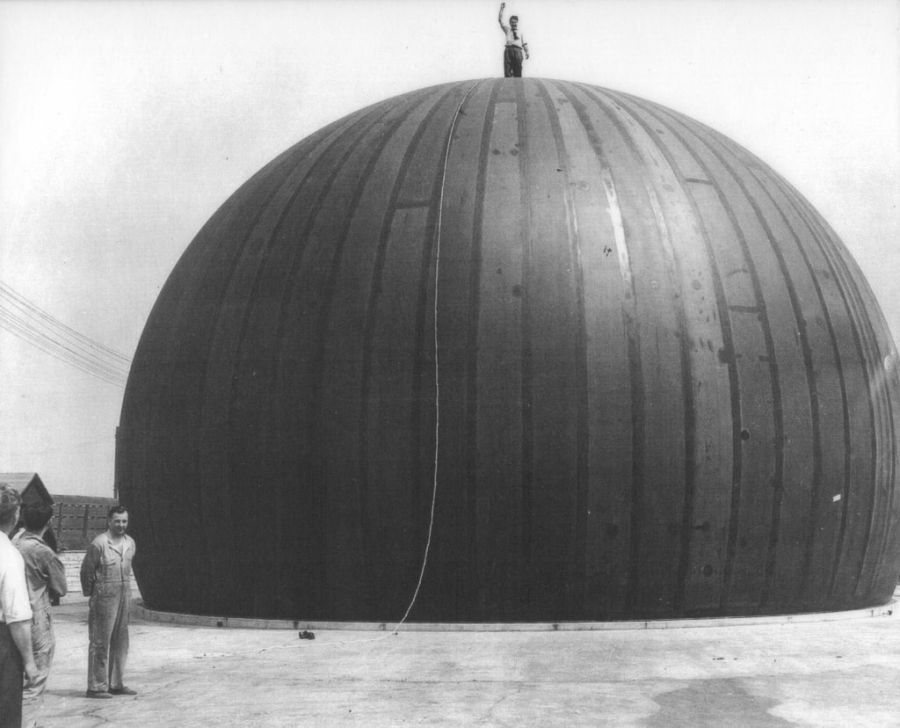
We collect basic website visitor information on this website and store it in cookies. We also utilize Google Analytics to track page view information to assist us in improving our website.
Did you know that air structures haven’t always been used for indoor sports? In fact, air domes have a long history in which they’ve been used for some amazing purposes. One of these is a “radome.” You might be asking, “What the heck is a radome?”
In the 1940s, the US Air force went to work creating a network of radar antennae to patrol the skies over North America. To provide early warning of attacks coming from the North, the plan was to install radar antennae across the Arctic, northern Canada, and Alaska. Should an attack come from above, the US wanted to be ready.
There was a problem though. These areas are full of ice and snow, prime conditions for bogging down a radar antenna. So, the options would be to figure out a way to constantly de-ice the radar, or figure out a way to protect them from the elements. Traditional structures have walls that are too thick and include materials that can interfere with signal strength. How could they create a structure to protect the equipment without completely closing it off with thick walls?
Luckily, an ingenious engineer found the solution. The radome. A combination of the words “radar” and dome,” a radome is, in essence, a weatherproof enclosure that can surround a radar and protect it from the outside, without impeding its function.
In 1946, Walter Bird oversaw the construction of the first air supported radome. These air supported domes were completely round and resembled, and functioned, like a large balloon over top of the radar system. Made possible by advances in fabric technologies, this first radome was created with a neoprene-coated fibreglass fabric. Newer fabrics with greater architectural properties pushed new uses for air supported construction. Radomes were an effective solution and they pushed the boundaries of what could be done with fabric and air.

PHOTO: Walter Bird on first Radome at CAL 1948
Air inflated radomes had the benefits of being light, inexpensive, and easy to setup—everything the US Air Force were looking for to protect their expensive equipment in difficult to reach areas. Walter Bird had come up with the ideal solution for a unique situation. But air domes would quickly grow beyond this very specific application.
Modern air supported structures arrived in Europe by the mid-1950s and they likely had at least some influence from Walter Bird and his air supported radomes.
Of course, The Farley Group doesn’t build radomes, but we do owe a lot to the great ideas of the past. Walter Bird’s solution to protecting sensitive equipment in the harshest of conditions paved the way for the modern uses of air supported structures.
The Farley Group does build large air supported structures for nearly everything else! Tennis, soccer, football, or golf domes are just a few of the applications that we’ve pushed the technology to. Our domes provide indoor venues for playing outdoor type sports for protection from the outside weather. Although our bubbles aren’t used in the arctic like radomes were, they are still well equipped to deal with the worst winter weather conditions that Canada or the northern US has to dish out!
